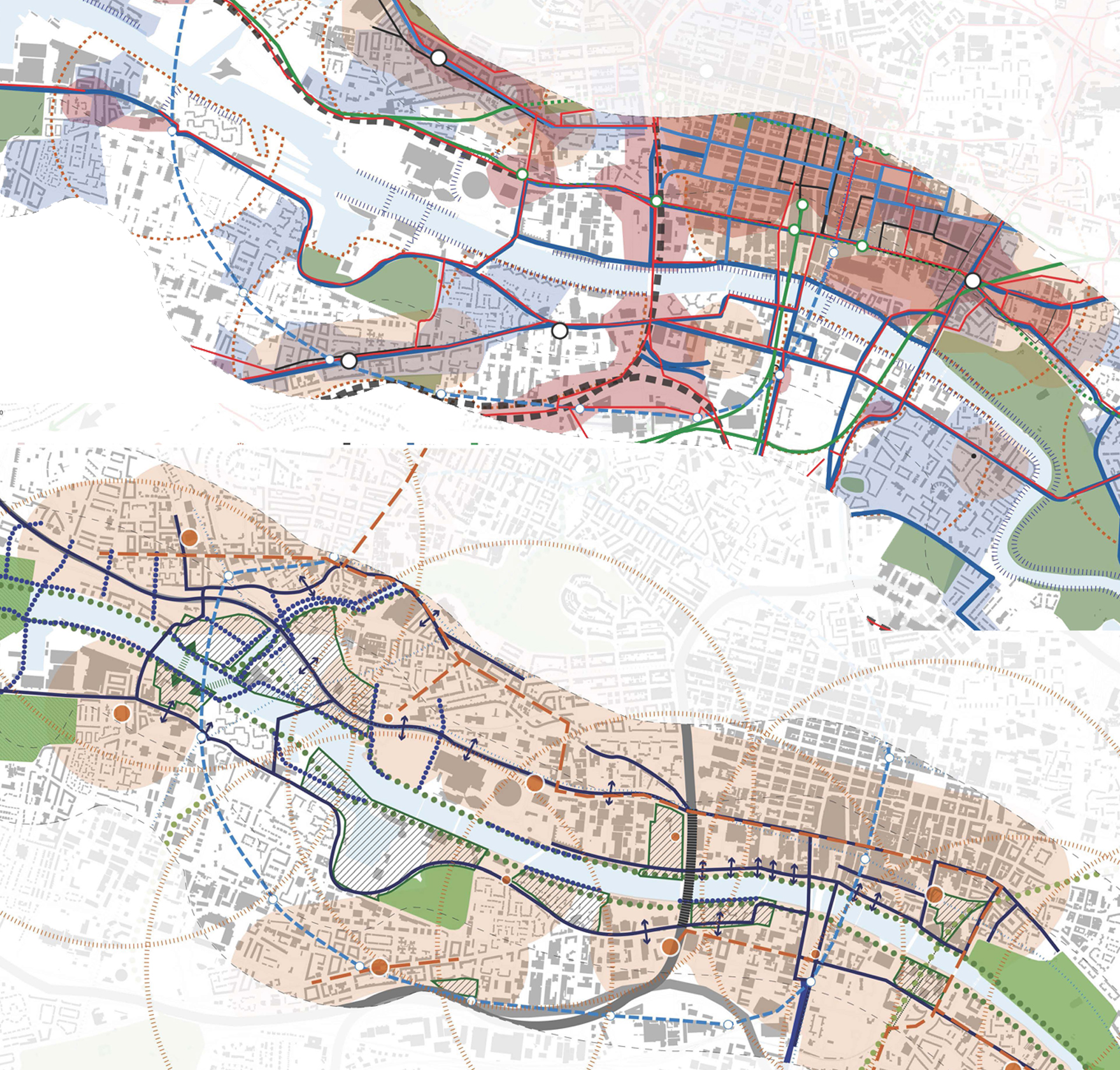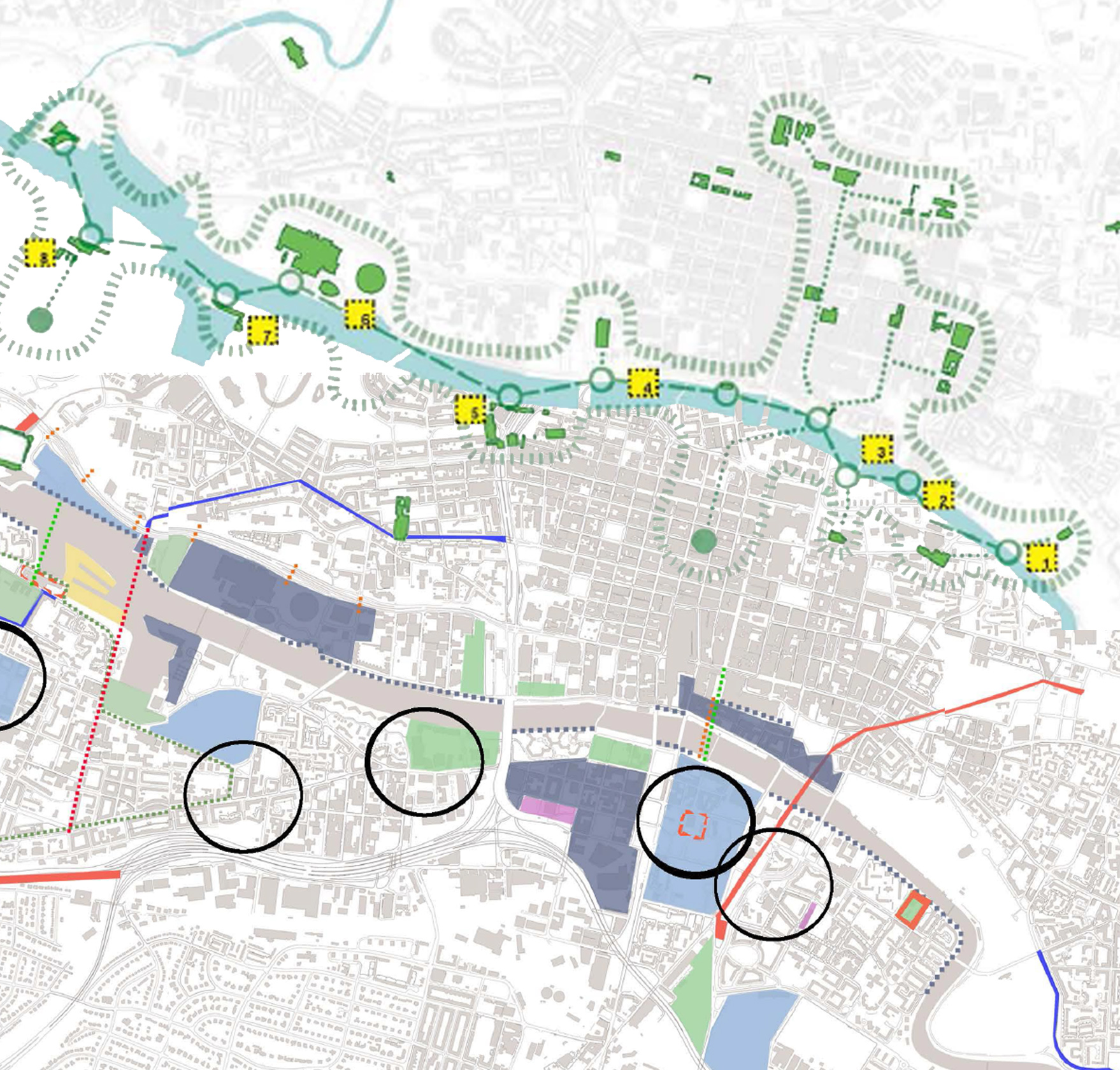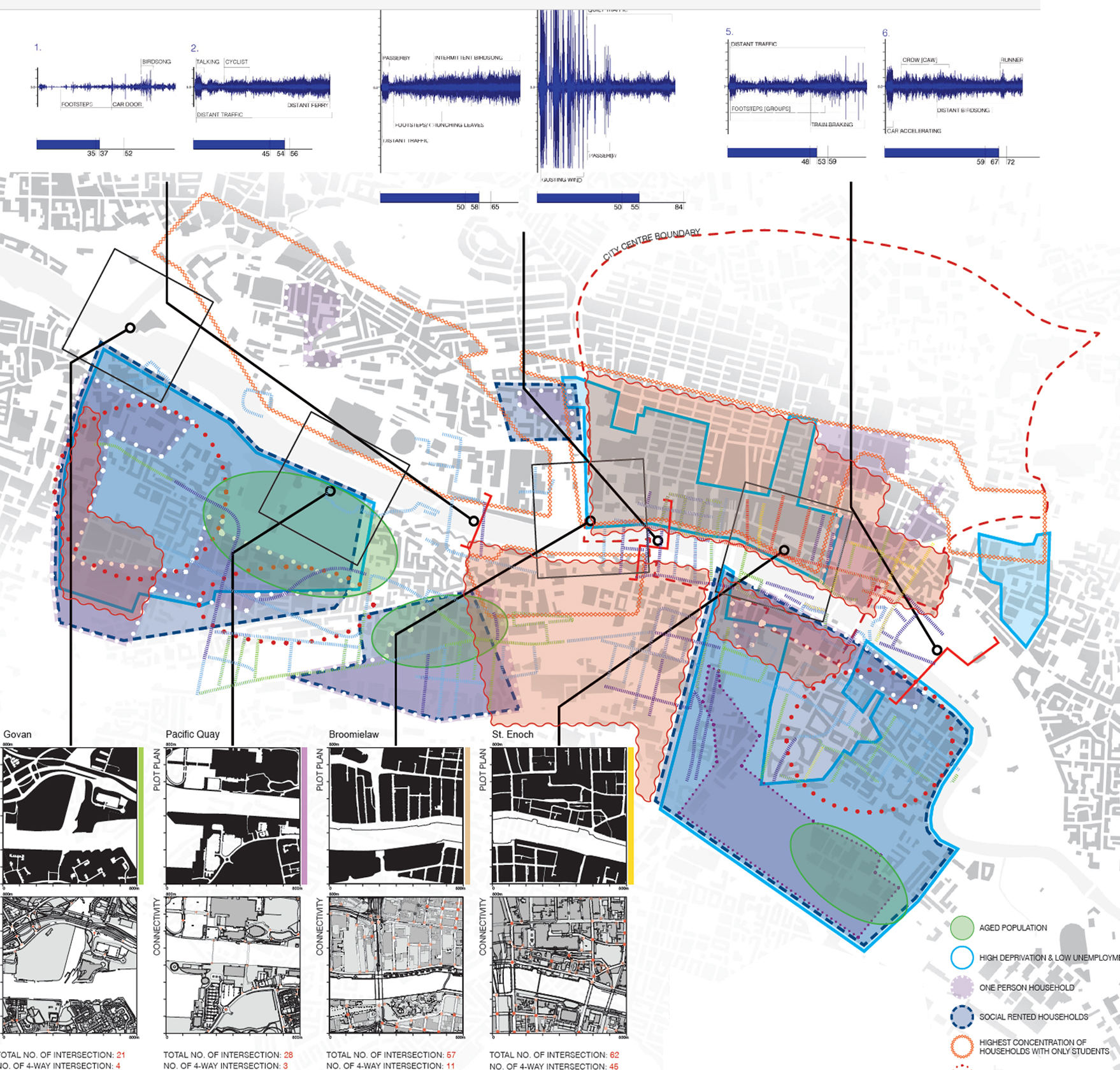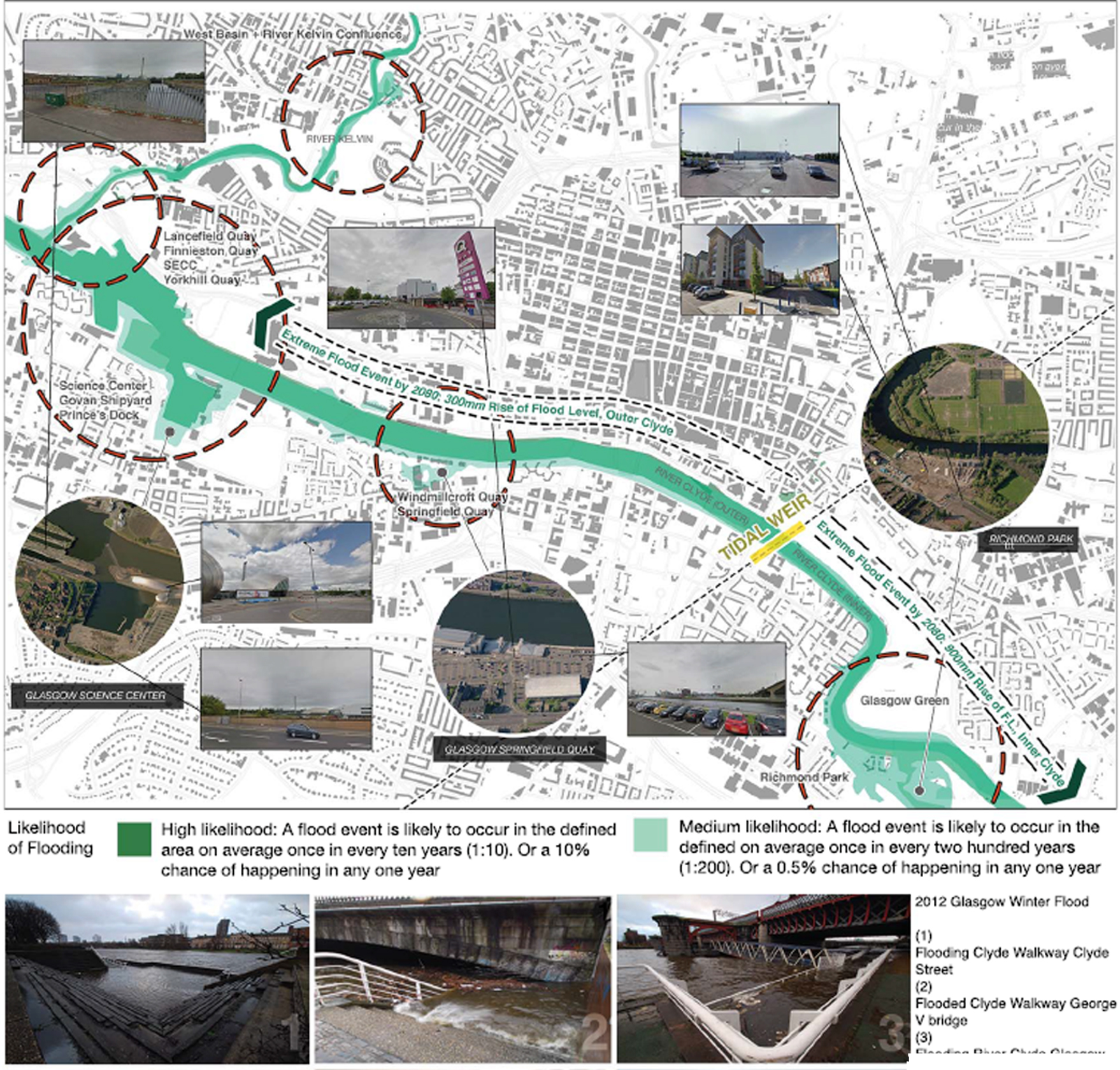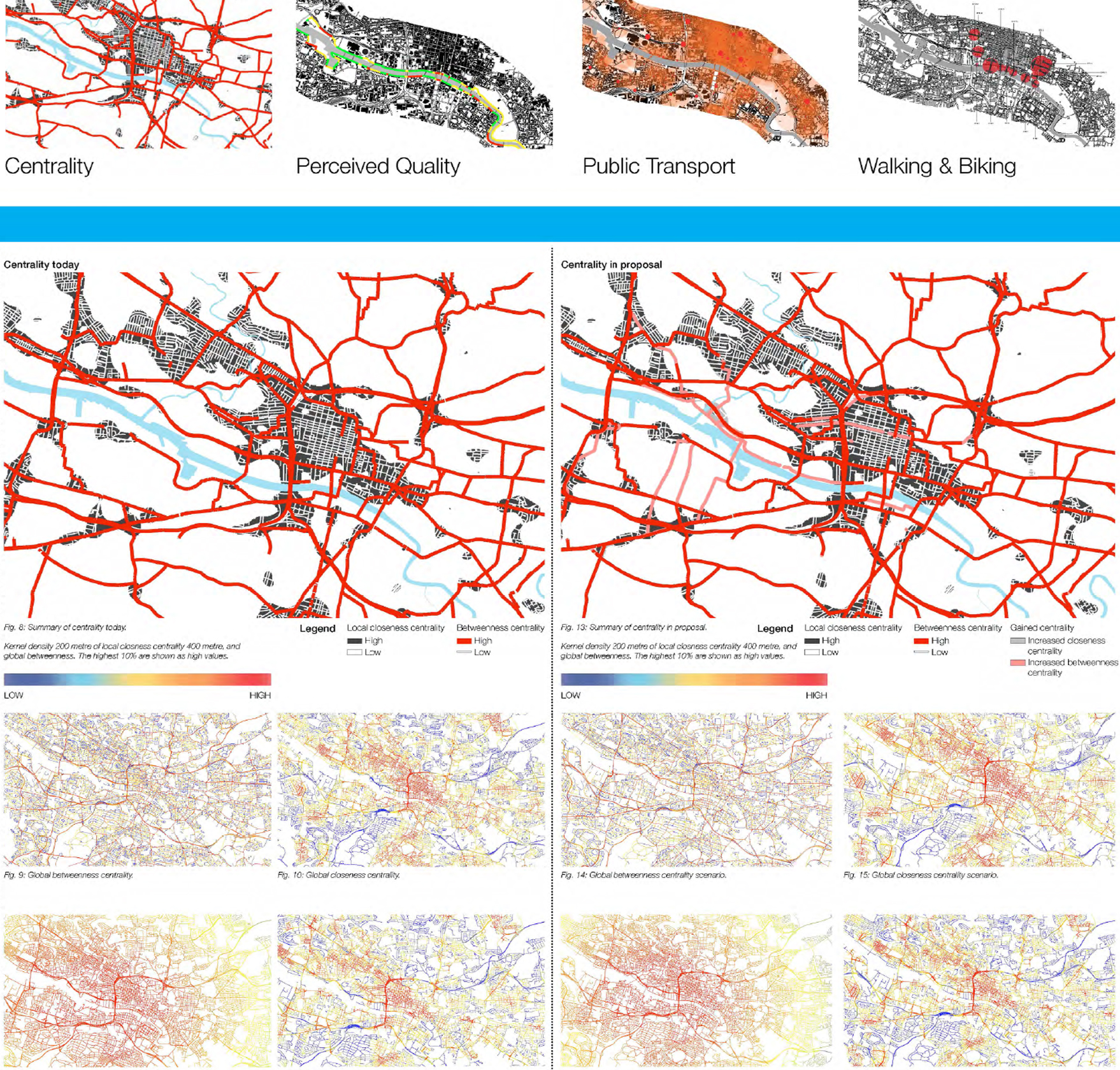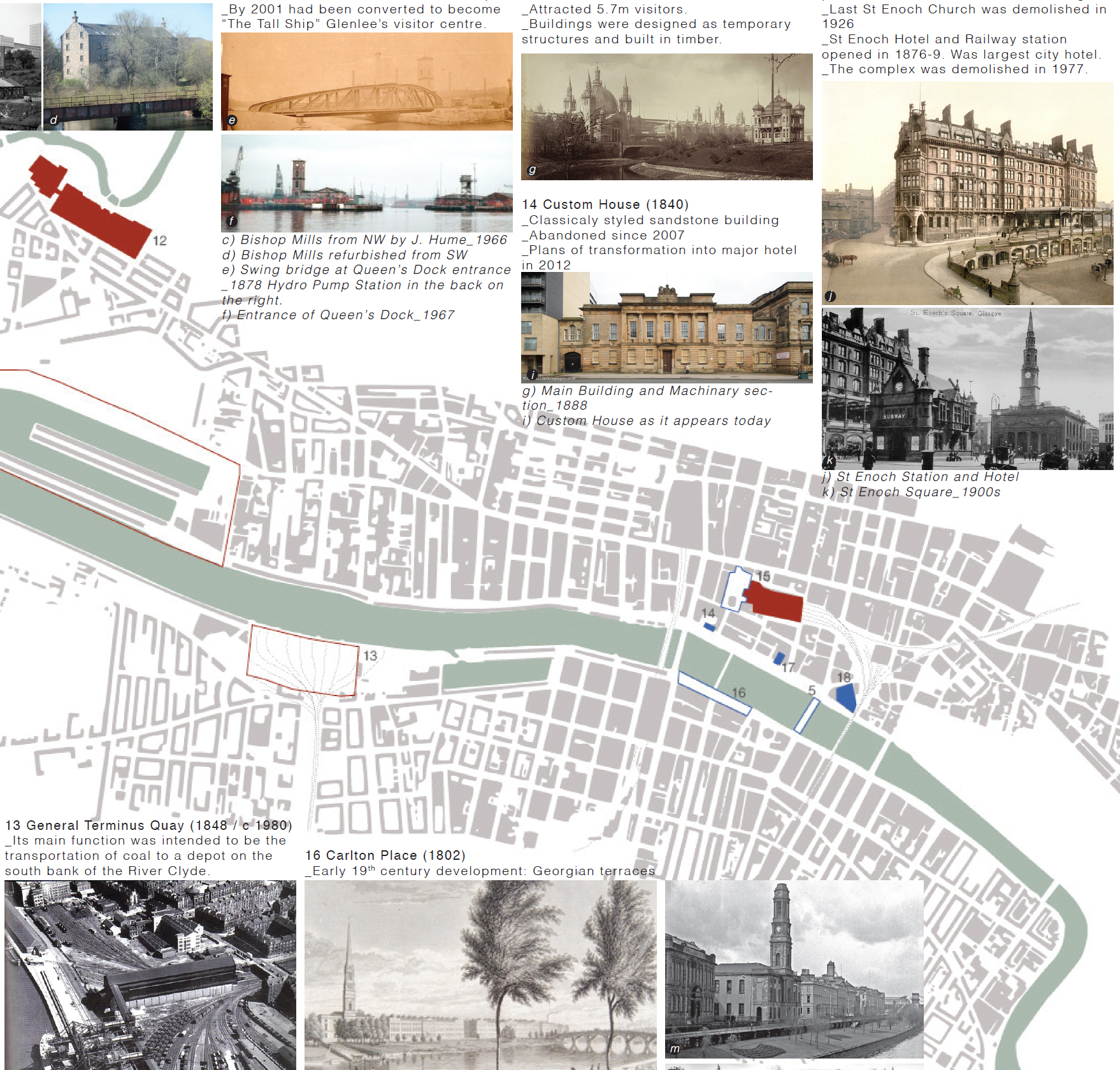Future Glasgow: “The Pearls of the Clyde” Strategy
Our analysis showed an open wound in Glasgow. Along the River Clyde, the urban fabric seems particularly weak: lacks access to services, features irregular and incoherent densities and large impenetrable barriers, is marginal to the wider urban network and out of human scale. These factors trigger a vicious self-reinforcing cycle …


